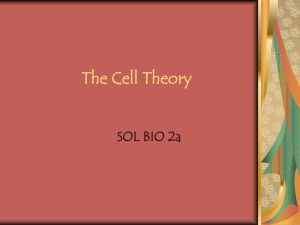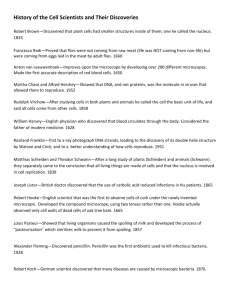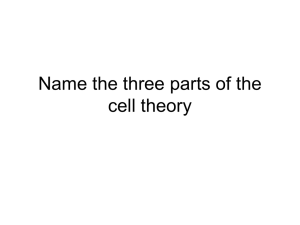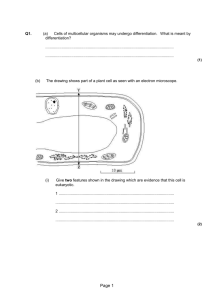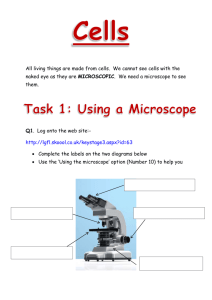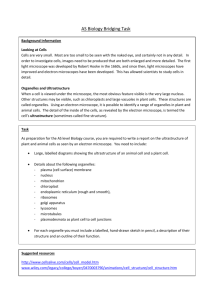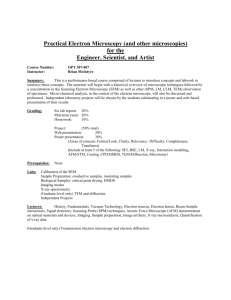Discovering Cells – Assessment
advertisement
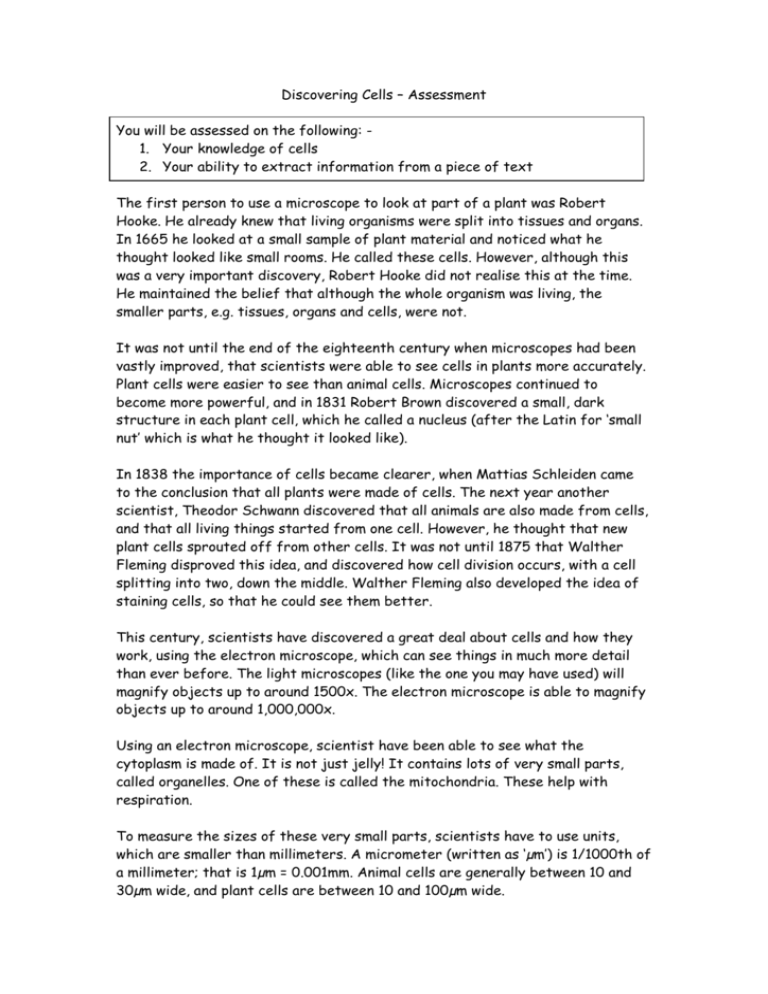
Discovering Cells – Assessment You will be assessed on the following: 1. Your knowledge of cells 2. Your ability to extract information from a piece of text The first person to use a microscope to look at part of a plant was Robert Hooke. He already knew that living organisms were split into tissues and organs. In 1665 he looked at a small sample of plant material and noticed what he thought looked like small rooms. He called these cells. However, although this was a very important discovery, Robert Hooke did not realise this at the time. He maintained the belief that although the whole organism was living, the smaller parts, e.g. tissues, organs and cells, were not. It was not until the end of the eighteenth century when microscopes had been vastly improved, that scientists were able to see cells in plants more accurately. Plant cells were easier to see than animal cells. Microscopes continued to become more powerful, and in 1831 Robert Brown discovered a small, dark structure in each plant cell, which he called a nucleus (after the Latin for ‘small nut’ which is what he thought it looked like). In 1838 the importance of cells became clearer, when Mattias Schleiden came to the conclusion that all plants were made of cells. The next year another scientist, Theodor Schwann discovered that all animals are also made from cells, and that all living things started from one cell. However, he thought that new plant cells sprouted off from other cells. It was not until 1875 that Walther Fleming disproved this idea, and discovered how cell division occurs, with a cell splitting into two, down the middle. Walther Fleming also developed the idea of staining cells, so that he could see them better. This century, scientists have discovered a great deal about cells and how they work, using the electron microscope, which can see things in much more detail than ever before. The light microscopes (like the one you may have used) will magnify objects up to around 1500x. The electron microscope is able to magnify objects up to around 1,000,000x. Using an electron microscope, scientist have been able to see what the cytoplasm is made of. It is not just jelly! It contains lots of very small parts, called organelles. One of these is called the mitochondria. These help with respiration. To measure the sizes of these very small parts, scientists have to use units, which are smaller than millimeters. A micrometer (written as ‘µm’) is 1/1000th of a millimeter; that is 1µm = 0.001mm. Animal cells are generally between 10 and 30µm wide, and plant cells are between 10 and 100µm wide. Questions: 1. In which year did Robert Hooke discover cells (1 mark) 2. What theories about organs and tissues existed, prior to the eighteenth century (2 marks) 3. Why did scientists find cells in plants before finding cells in animals (2 marks) 4. If you had to decide if a cell was from a plant or an animal, what things would you look for (3 marks) 5. Who discovered the nucleus (1 mark) 6. What do we now know to be the job of the nucleus (2 marks) 7. When did Theodor Schwann say that animals were made up of cells too (1 mark) 8. Draw a diagram of how Theodor Schwann thought a new plant cell would be made (1 mark) 9. Draw and label a diagram of what you would expect an animal cell to look like if you used an electron microscope (4 marks) 10. Draw and label a diagram of what you would expect a plant cell to look like if you used an electron microscope (6 marks) 11. The paragraph explains that a light microscope can magnify objects up to around 1500x. What does this mean (1 mark) 12. How many micrometers are then in 1 millimeter (1 mark)
